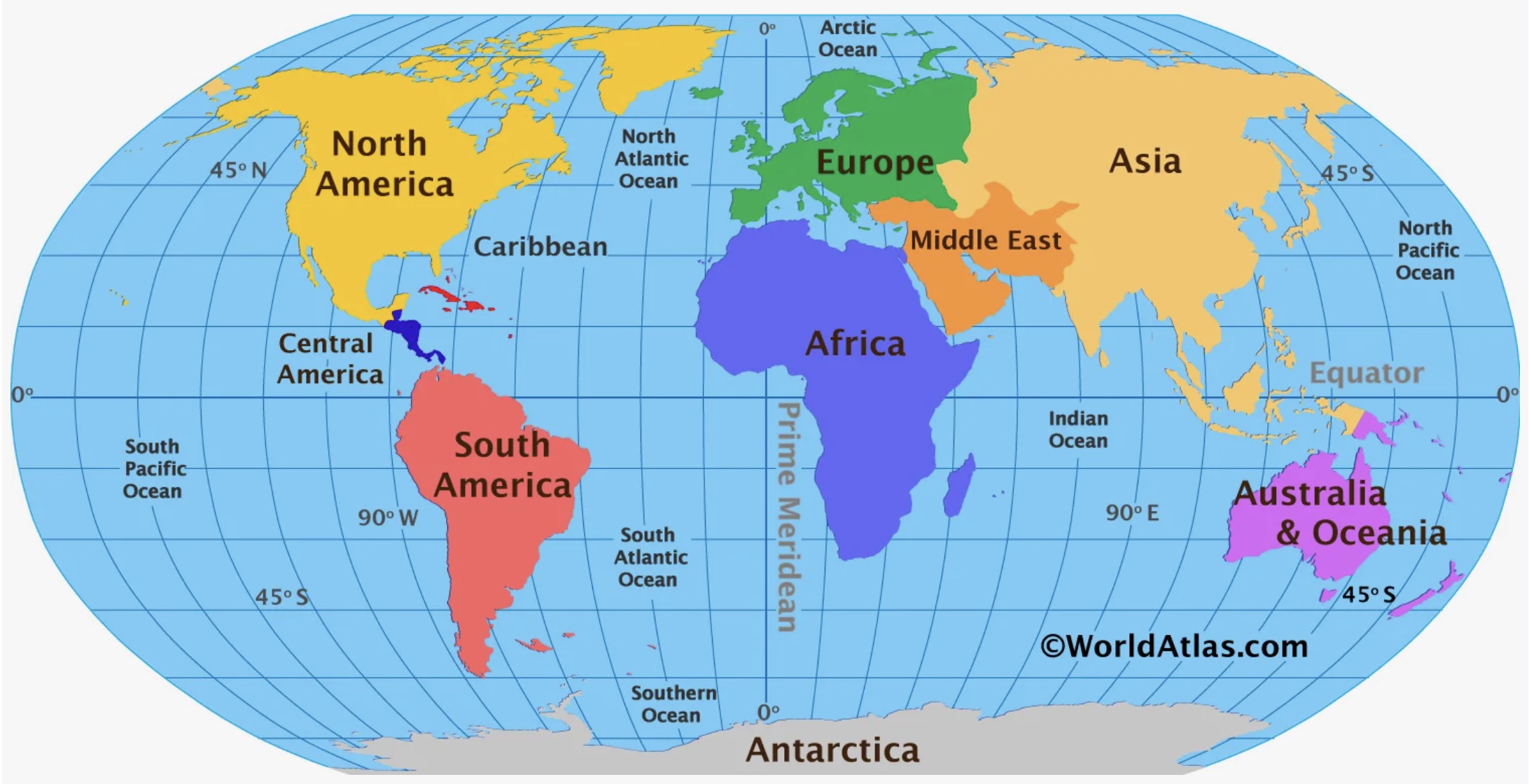GEOGRAPHY-CONTINENTS
- Подробности
- 601
The continents are the largest landmasses on Earth, forming the main divisions of our planet’s surface. Traditionally, there are seven continents: Africa, Antarctica, Asia, Europe, North America, South America, and Australia. Each continent has its own unique geography, cultures, and history, making them key topics for learning about the world.
Continents

The Continents are considered the largest natural divisions of the Earth’s land surface and the foundation of human geography. The very word continent comes from the Latin continere — “to hold together.” These vast landmasses are separated by oceans and seas, yet they have been the stage on which human civilizations arose and developed.
Emerging in geological history through the slow movement of tectonic plates, the continents took their modern shape millions of years ago. Today, most geographers traditionally recognize seven continents: Africa, Antarctica, Asia, Australia, Europe, North America, and South America. Each has its own unique geography, climate zones, peoples, and cultures, but together they form the global mosaic of human life.
One of the greatest contributions of continental study is understanding how geography shapes history. Asia, the largest continent, gave rise to the earliest civilizations in Mesopotamia, India, and China. Africa, the cradle of humankind, nurtured the beginnings of human evolution. Europe became a center of philosophy, science, and global exploration. The Americas developed great civilizations such as the Maya, Aztec, and Inca, and later became a crossroads of cultures. Australia and Oceania hold unique ecosystems and indigenous traditions. Even Antarctica, though uninhabited permanently, plays a crucial role in Earth’s climate and scientific research.
The continents also differ greatly in their natural resources and environments. Africa is rich in minerals and wildlife; South America contains the Amazon rainforest, the “lungs of the planet”; Asia holds immense rivers, mountains, and fertile plains; and North America combines vast forests, prairies, and technological hubs. Their climates range from the icy deserts of Antarctica to the tropical jungles near the equator, shaping the ways people live, trade, and adapt.
Although political borders and nations divide the continents, their shared geography unites humanity. Trade routes, migrations, and cultural exchanges have always crossed continental boundaries, linking societies together. In the modern age of globalization, continents remain symbols of both diversity and unity. Understanding them helps us see the Earth not just as a map of separate lands, but as a single interconnected world.
LISTEN TO THE TEXT





 Как правильно изучать английский язык по карточкам (статьи)
Как правильно изучать английский язык по карточкам (статьи)